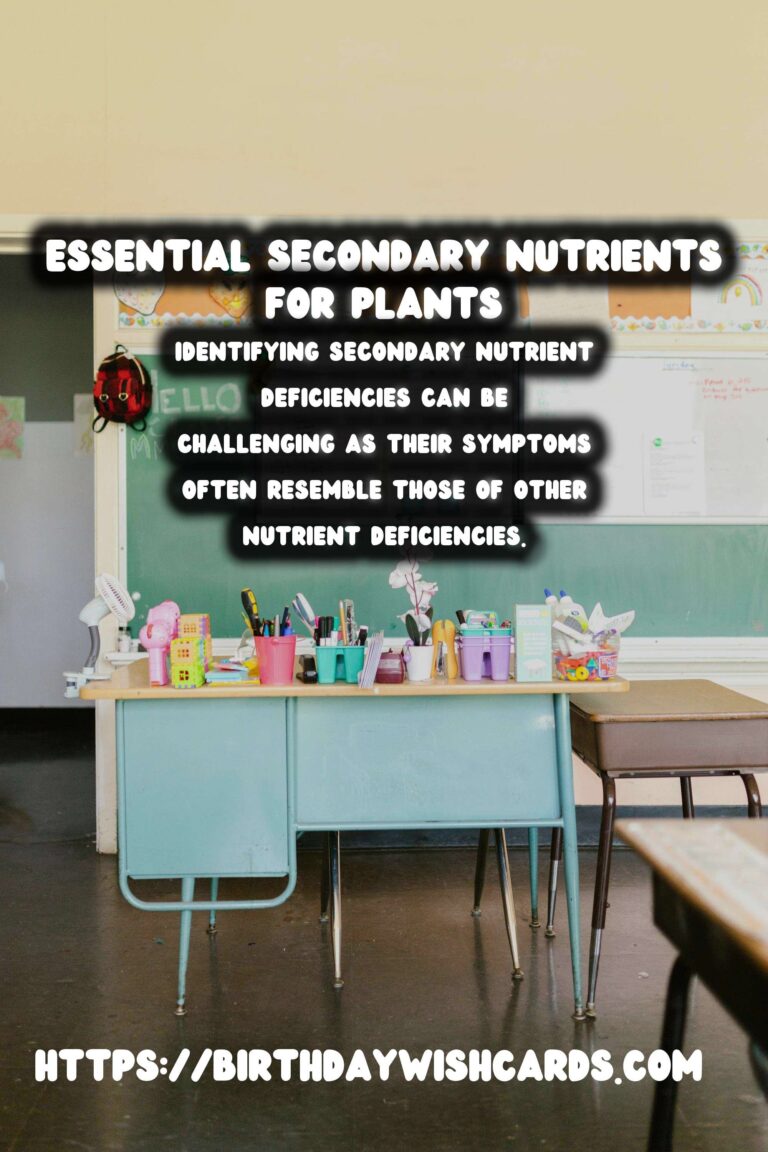
In the world of gardening and agriculture, understanding the role of nutrients is crucial for the healthy growth of plants. While primary nutrients such as nitrogen, phosphorus, and potassium are well-known, secondary nutrients often remain overlooked despite their significant role in plant development. This article delves into the essential secondary nutrients that plants require for optimal growth and how they contribute to a plant’s overall health.
What Are Secondary Nutrients?
Secondary nutrients are crucial elements that plants need in smaller quantities than primary nutrients but are still vital for proper growth and development. These nutrients include calcium, magnesium, and sulfur. Each plays unique roles in plant health, influencing various physiological processes.
The Role of Calcium in Plant Growth
Calcium plays a pivotal role in maintaining the structural integrity of plant cell walls. It is essential for root and leaf development and helps in the absorption and movement of other nutrients within the plant. Calcium deficiency can lead to stunted growth and poor fruit development, often visible as blossom end rot in tomatoes and other fruits.
Magnesium: The Central Atom of Chlorophyll
Magnesium is a critical component of chlorophyll, the molecule responsible for photosynthesis. Without magnesium, plants cannot produce the energy needed for growth. Moreover, magnesium activates many plant enzymes needed for growth and contributes to the stabilization of cell membranes. Symptoms of magnesium deficiency include interveinal chlorosis, where the areas between leaf veins turn yellow while veins remain green.
Sulfur: A Building Block of Proteins
Sulfur is essential for the synthesis of amino acids, the building blocks of proteins. It also plays a role in the formation of certain vitamins and enzymes. Sulfur deficiency can result in yellowing of the leaves, similar to nitrogen deficiency, and can impact overall plant health and yield.
Signs of Secondary Nutrient Deficiencies
Identifying secondary nutrient deficiencies can be challenging as their symptoms often resemble those of other nutrient deficiencies. Key signs include yellowing of leaves, stunted growth, and poor fruit or flower development. Regular soil testing and observation of plant health can help in early detection and correction of these deficiencies.
Enhancing Soil for Secondary Nutrient Availability
To ensure that plants receive an adequate supply of secondary nutrients, it is essential to maintain healthy soil conditions. This can be achieved through practices such as adding organic matter, using gypsum to supply calcium and sulfur, and ensuring proper pH levels for nutrient availability. Additionally, soil testing can guide the appropriate use of fertilizers to correct deficiencies.
Conclusion
Understanding and managing secondary nutrients is crucial for promoting healthy plant growth and maximizing yield. By recognizing the importance of calcium, magnesium, and sulfur, gardeners and farmers can take proactive steps to ensure their plants receive a well-balanced supply of nutrients. This holistic approach to plant nutrition not only enhances growth but also contributes to sustainable agricultural practices.
Secondary nutrients are crucial elements that plants need in smaller quantities than primary nutrients but are vital for proper growth. Calcium is essential for root and leaf development and helps in the absorption and movement of other nutrients within the plant. Magnesium is a critical component of chlorophyll, necessary for photosynthesis and energy production in plants. Sulfur is essential for the synthesis of amino acids and plays a role in the formation of certain vitamins and enzymes. Identifying secondary nutrient deficiencies can be challenging as their symptoms often resemble those of other nutrient deficiencies. 
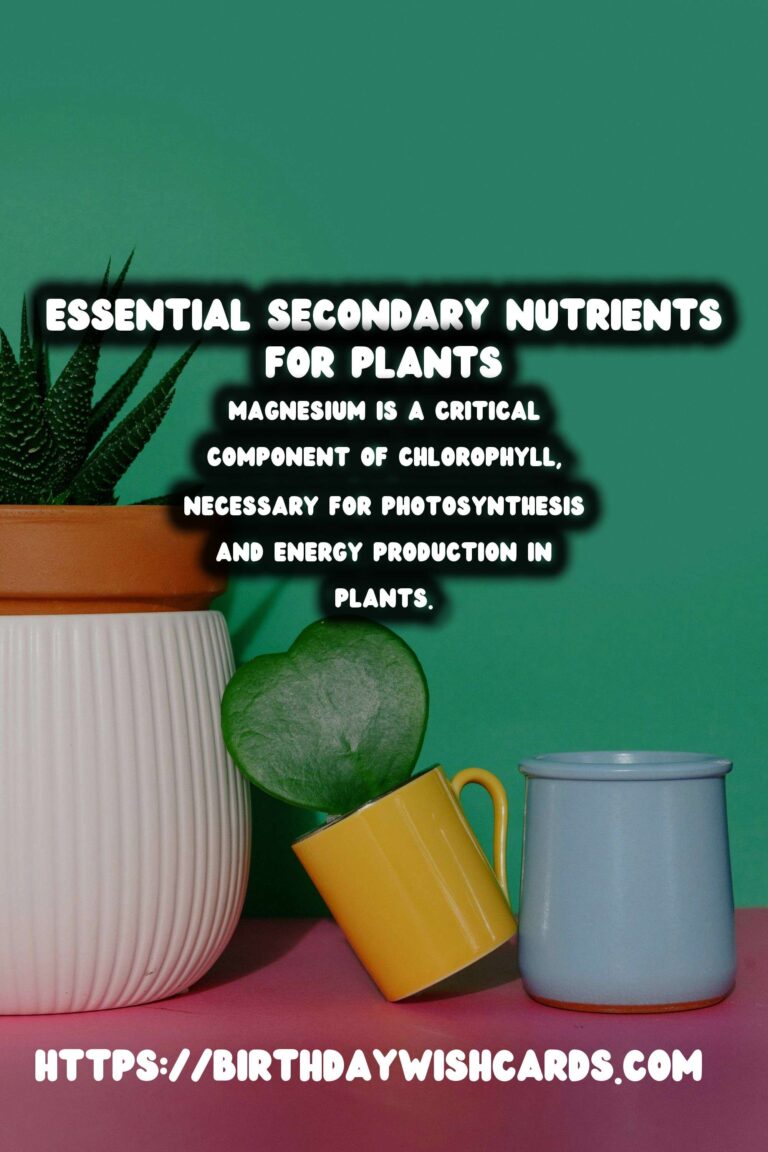
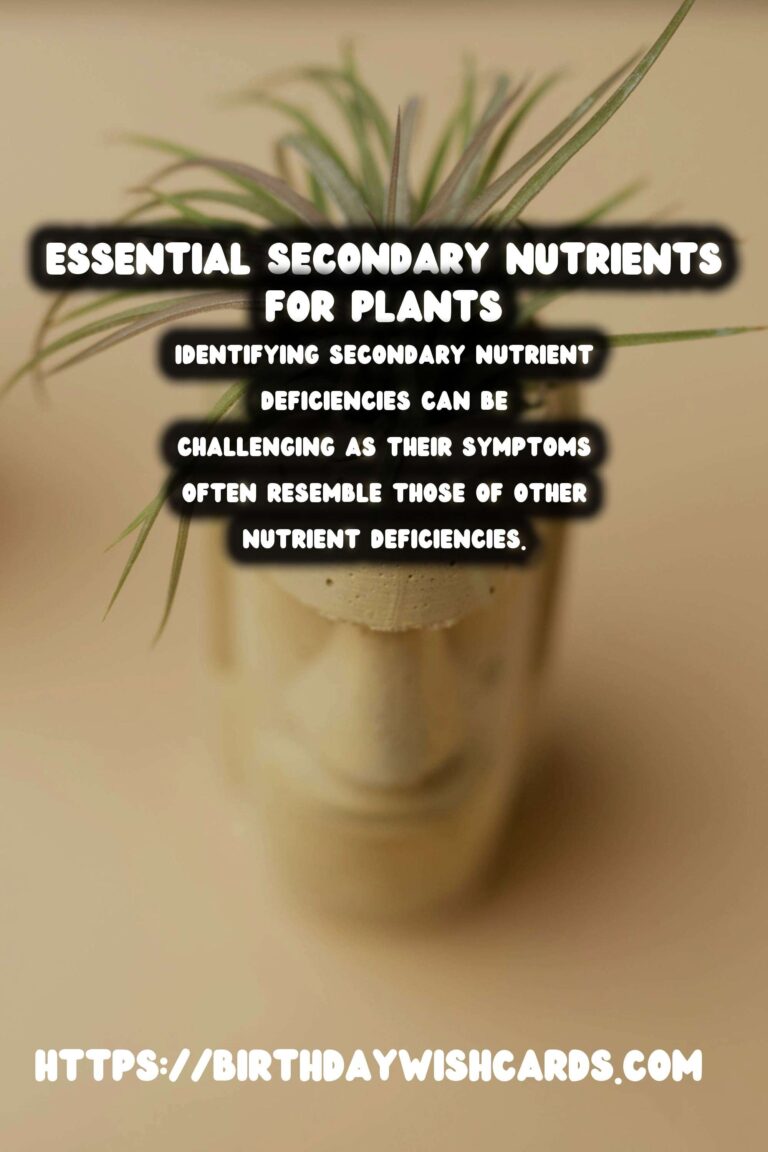
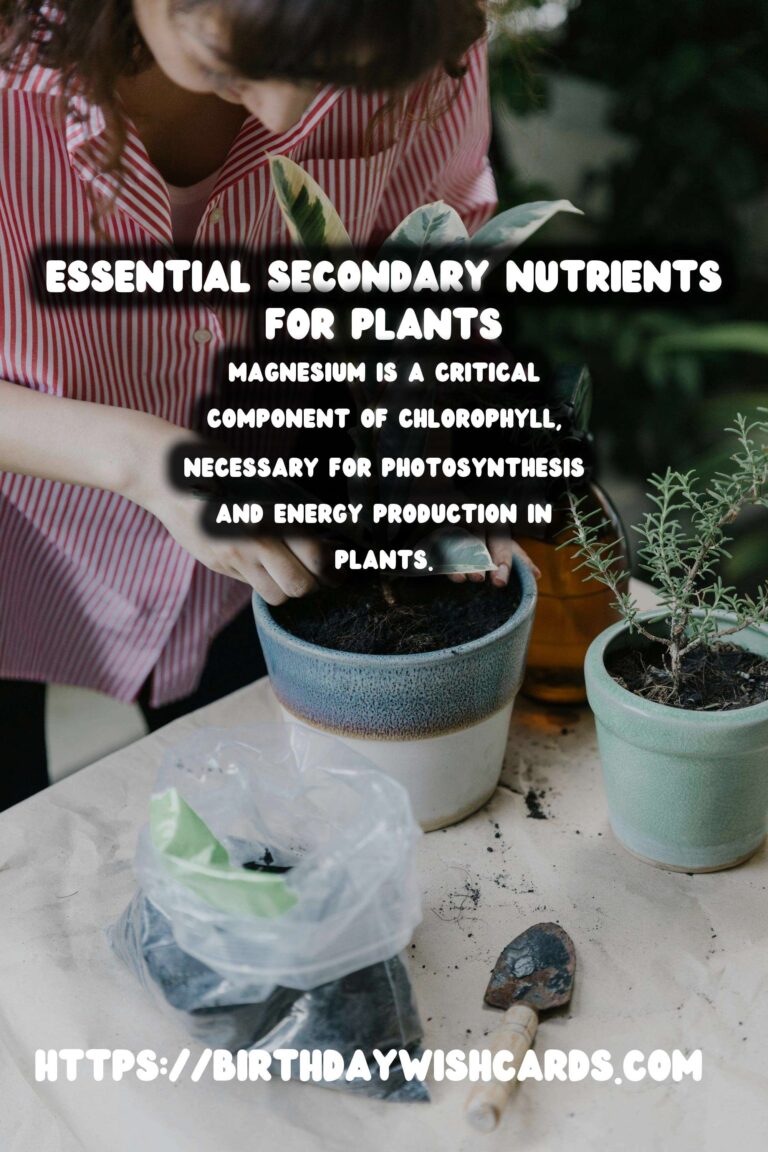
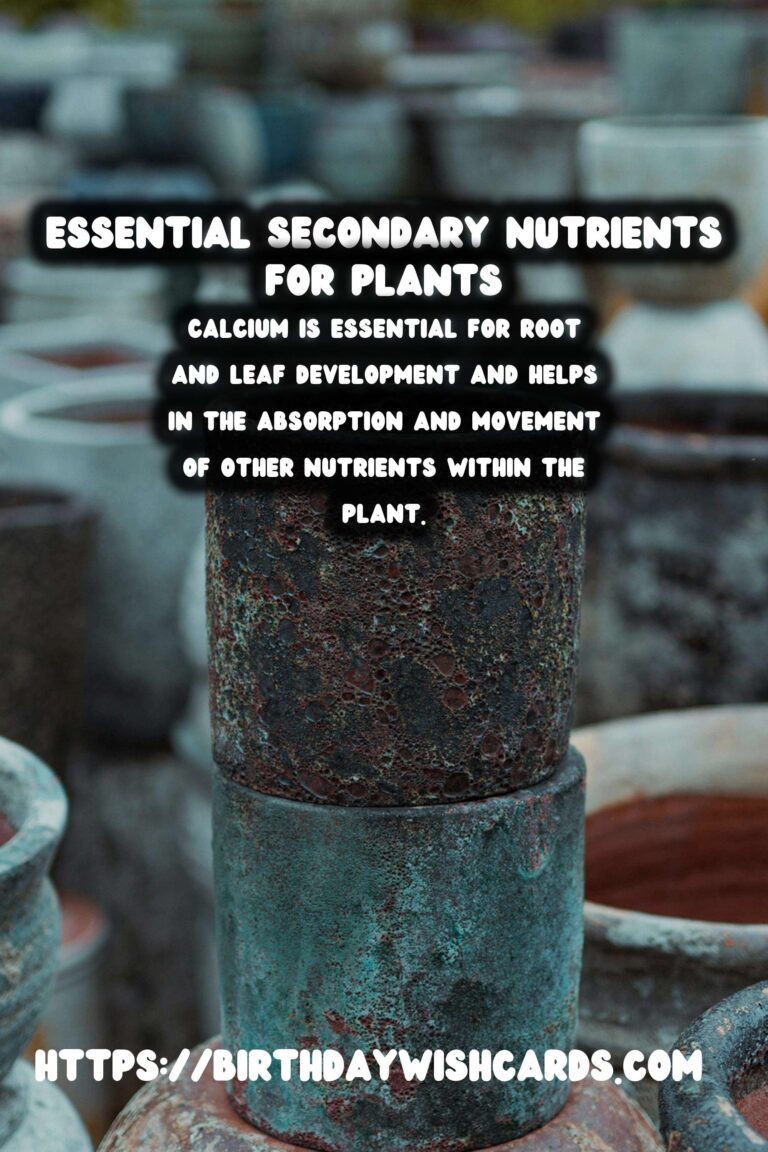


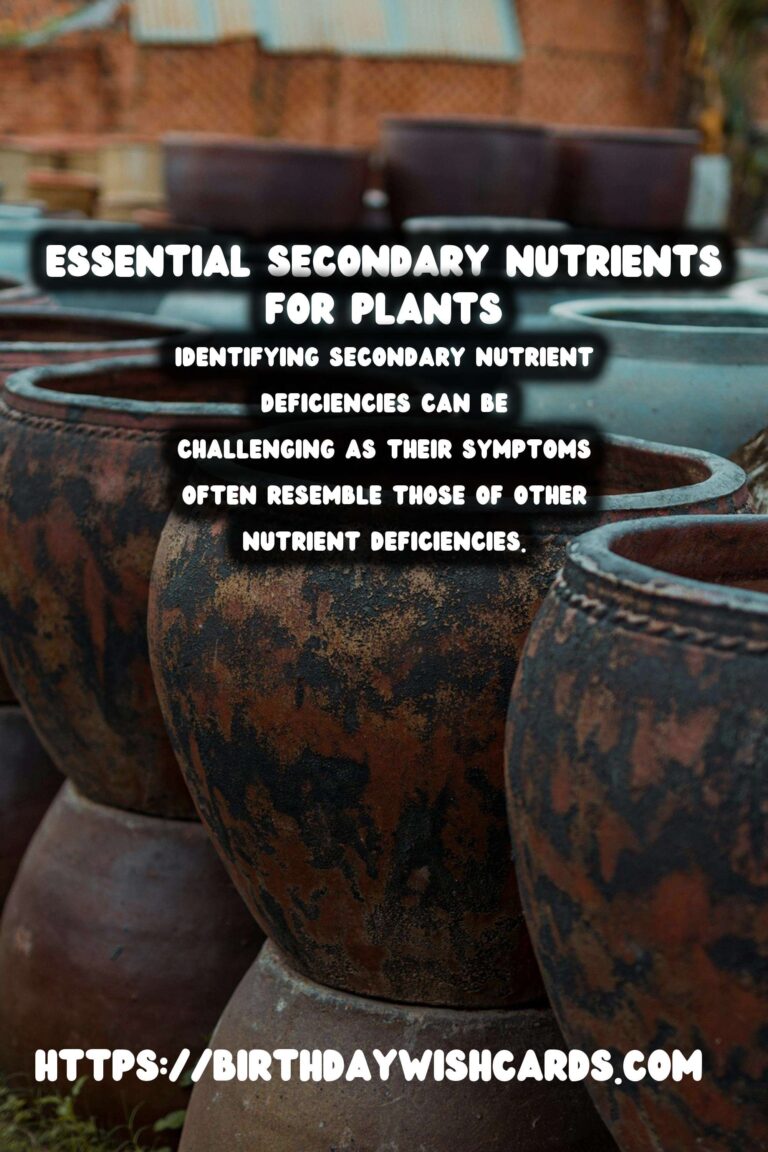

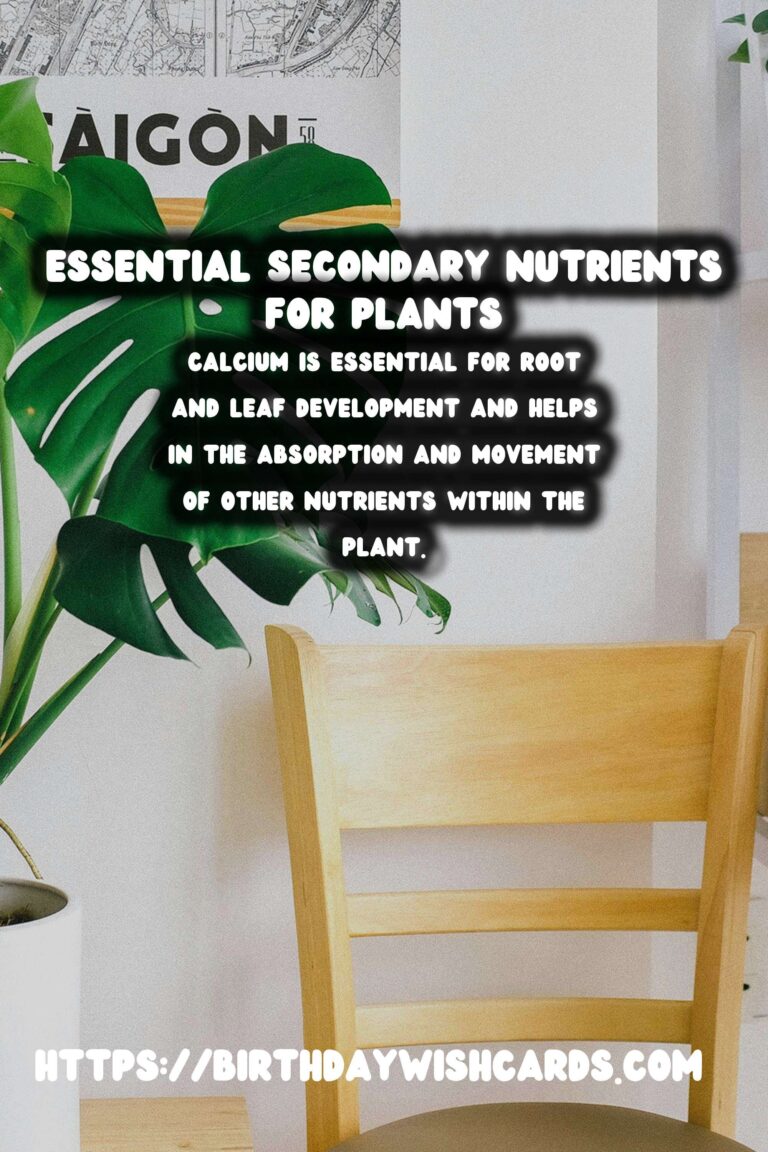
#PlantNutrients #GardeningTips #SoilHealth #PlantCare #Agriculture




